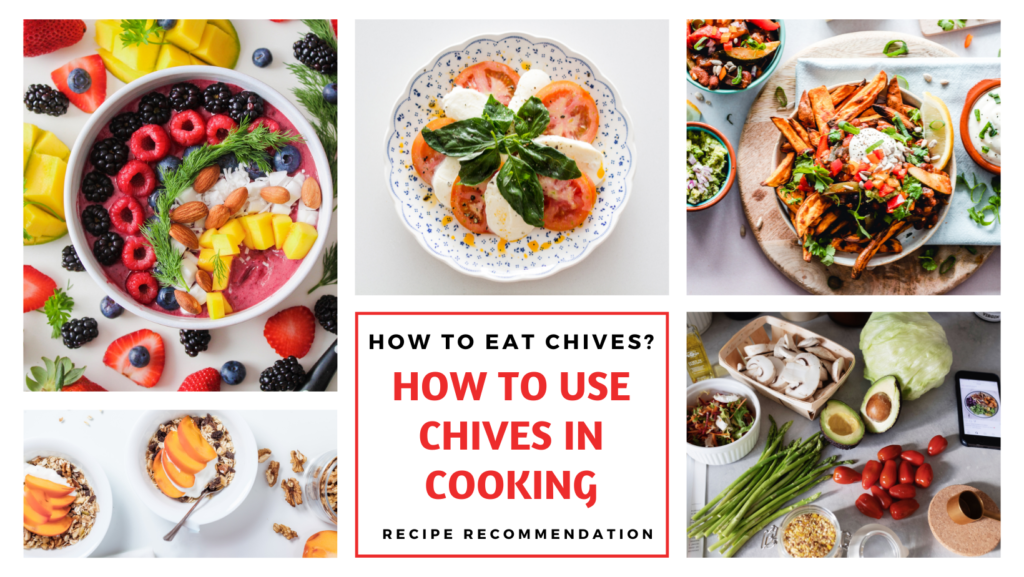There are so many health benefits of using or eating plants, vegetables and herbs. Some herbs are medicines on its own. In our previous posts, we have discussed different herbs and plants like: Nyanya Leaves for Fertility, How to Treat Hepatitis Using Milk Thistle, Dandelion Weed, and Turmeric. We shall discuss another medicinal plant, Chives – Uses and Health Benefits.
Uses and Health Benefits of Chives
Alright, welcome to my page. Today we are going to vegan again. I mean, we are going to talk about food medicine and in this post, we want to discuss on Uses and Health Benefits of Chives.
Chives? I am not sure some of us have heard this name for the first time. yes. It is the name of a plant leave. It is pronounced as “Chaivs”. Chives contain nutritional compounds that are vital for bone and neurological health and can help to prevent osteoporosis and Alzheimer’s disease.
They also have an exceptional amount of vitamin A and other antioxidants such as carotenes and lutein which help to protect the body from a variety of cancers. Chives contain a healing compound called allicin which has anti-bacterial, anti-viral, and anti-fungal properties.
Allicin also has the ability to help reduce cholesterol, lower blood pressure, and help to decrease the risk of coronary artery disease, peripheral vascular disease, and stroke.
The sulfur containing oil in chives provides powerful antiseptic abilities without any of the digestion disturbing tendencies that the rest of the onion family can create.
About Chives
Chives are also known to help build the immune system, fight intestinal fermentation, and stimulate both stomach and liver function. They are especially beneficial for those suffering from inflammation and autoimmune disorders such as fibromyalgia, bursitis, chronic fatigue, adrenal issues, shingles, epstein barr virus and vertigo.
Chives are also an excellent source of folic acid which is essential for woman before and during pregnancy.
Chives can be easily grown indoors or out and are a simple, flavorful, and healthy addition to any salad, guacamole, potato, rice, soup, or vegetable dish.
Chives, also known as Allium schoenoprasum, are a perennial plant related to scallions and leeks. Chives are commonly used as a flavouring herb, but they also have mild stimulant and diuretic properties. Chives are also antiseptic and antibacterial, and they act as a natural bug repellant.
They are unique in that they have both culinary and health benefits. Here are some of the most notable health benefits you can receive from eating chives, along with some recipes and tips on how to use them in your cooking. Chives – Uses and Health Benefits. See Natural Ways to Cure Anovulation (Lack of Ovulation).
Chives, also known as Allium schoenoprasum, are a member of the onion family and are typically used as both an herb and as an edible garnish due to their mild flavor and aroma. Because of their pungent scent and flavor, chives are known to provide many health benefits when consumed in small amounts in your diet. Let’s take a look at some of the ways that you can use chives as well as some potential health benefits they can provide you with.
Chives – Uses and Health Benefits
Chives are a perennial herb in the onion family, which is native to Europe and Asia. These small, green shoots with strong onion flavor grow in clusters of leaves that appear similar to grass.
There are various ways through which you can use chives to add zinc to your food. However, keep in mind that they are prone to wilt very quickly if not stored properly. See the 7 Natural Ways to Cleanse Your Womb and Make Your Ovulation Normal.
This article will help you understand why chives are good for you, where you can find them, and how you can incorporate them into your diet. Read on to know more about the benefits of chives and how you can use them in your everyday cooking.

What are chives?
Garlic chives are a perennial plant that can be grown from seed or from clumps of cloves. They are part of the allium family, which includes onions, leeks, and garlic. Garlic chives blossom in late spring to produce an edible ornamental flower as well as edible leaves. The flowers can be eaten raw or added to salads or soups like garlic cloves. The leaves can also be used in cooking where they provide a milder onion flavor than the more common leek.
Chive plants grow best in a pot with good drainage so that the roots do not get soggy or waterlogged while still getting enough moisture to stay alive. Chives can also be grown in an aero garden. Chives – Uses and Health Benefits.
Why eat Chives?
- Adding chives to your dishes is a great way to add flavor without a lot of calories.
- Chives are also full of vitamins C, K, A, and B-6, not to mention minerals such as calcium, iron, and magnesium.
- Chives also have anti-inflammatory properties that can help with asthma or other respiratory conditions. They’re extremely versatile in the kitchen too!
- Garlic chives can be used anywhere you would use regular chives or garlic cloves;
- They can be added fresh to salads, sandwiches, or kinds of pasta or cooked into sauces, soups, and stews.
- If you want more flavor without adding any calories or fat then add some chopped chives on top of your dish just before serving.
Uses and Health benefits of chives
Garlic chives can be used to clean teeth, relieve heartburn, and reduce inflammation of the joints, and have been shown to have antiviral, antifungal, antibacterial, and antiviral properties. Read Methylated Spirit Vs Chlorhexidine Gel for Newborn Umbilical Cord Care, Which is Better?
These health benefits make them a great addition to many dishes such as pesto sauce.
Growing garlic chives is easy by planting them near other plants as they will help deter pests like aphids.
They can also be grown in pots or from seed so that you don’t have to worry about finding room in the garden for these wonderful herbs. Chives can be stored by keeping them in an airtight bag in the refrigerator or freezer.
You can also preserve your chives by drying them out or cooking them with other ingredients such as butter or oil.
Nutrition Facts
Fresh chives are a great way to add flavor to your dishes or use them as an ingredient in your favorite recipes. Chive blossoms make a beautiful garnish for any dish, too. As you can see, they have many different uses other than just adding flavor.
Chives – Uses and Health Benefits. In fact, their health benefits are vast. See the Fertility Booster – See these 3 Plants that Can Help you Conceive Quickly
Nutritional value of chives
- All chives have high amounts of Vitamin K, Vitamin C, Folate, and Potassium.
- They also contain a decent amount of Iron, Calcium, and Magnesium.
- Garlic Chives are the most potent in terms of nutrients.
- They can improve cholesterol levels and lower blood sugar levels which is beneficial for those with diabetes or pre-diabetes.
- Garlic chives are also anti-inflammatory.
6 Health Benefits of Chives
Garlic chives have been used in traditional Chinese medicine for centuries to:
1. Chives Promote digestion
2. It Clear lung congestion
3. Using chives Strengthen bones
4. It relieves muscle aches.
5. They also promote healthy blood circulation
6.Eating chives may help lower blood pressure. These little guys are truly amazing.
Chives – Uses and Health Benefits
How to use chives in cooking
Chives are a popular herb that can be used in both cooking and decorative projects. Not only are chives edible, but they also have many health benefits. Garlic chives can be eaten raw or cooked, but the flavor will be more potent when they’re cooked.
How to eat Chives?
Chives can also be used to make sauces, soups, omelets, eggs, and rice dishes such as risotto.
The leaves of chives can also be used to garnish various food items including grilled meat and vegetables.
To store chives after you’ve cut them, wrap the bunch in a damp paper towel then place it in a plastic bag before refrigerating it.
Garlic – chives cultivation
As a medicinal herb, it can be cultivated like any other herb or plant. For you to be able to cultivate chives successfully, there are certain conditions that must be met. This is not limited to the climate, weather conditions, and mode of cultivation. In this section, we have listed effective ways you can cultivate chives for a better result.
Step-by-step guide on how to grow chives
- To grow chives in pots, first find a pot that is at least 12 inches deep.
- You can also start growing chives from seed by spreading the seeds over the top of potting soil.
- Then, place your pot outside or in a warm area.
- Chives blossom during late spring to early summer.
- The leaves are thin, long, and straight with a garlic flavor which will intensify if they are left to dry out.
- Chive leaves can be used as an addition to salads or sandwiches for some extra flavor.
Side Effects of Chives
Some people may experience gastrointestinal upset or allergic reactions to chives. It is a good idea to keep the consumption of chives in moderation, as too much can lead to stomach problems. Chives can also be eaten raw, but cooking them will reduce any side effects.
Chive Recipe Recommendation
Looking for a new way to use chives? Try this recipe for Garlic Chive Tortellini. First, make the tortellini dough by combining flour, salt, egg yolk, butter, and water. Mix until it forms a ball of dough then let it rest for 30 minutes. Next, roll out the dough into thin sheets with a rolling pin then cut rounds out with an upside-down bowl or biscuit cutter. Chives – Uses and Health Benefits.
Place the tortellini on a tray dusted with flour then cover them up to prevent them from drying out while you work on the filling. For the filling, boil fresh chives in salted water for 2-3 minutes then drain and finely chop them. Add these chopped fresh chives to softened garlic cloves that have been mixed in with ricotta cheese.
Fold this mixture together until thoroughly combined before spooning it into each sheet of pasta dough. Seal the tortellini tightly around the edges using a fork before boiling them in salted water for 5-6 minutes. Once they’re done cooking, serve them with your favorite sauce (olive oil, pesto)
Chives are members of the onion family, which means they have similar health benefits to many other onions and garlic-based foods. Read on to find out how chives can help improve your health.
Chives are a pungent, green onion-like herb that provides a lot of benefits. In fact, their popularity has grown so much in recent years that you can now find them pre-packaged and stocked next to other herbs in many grocery stores. Many African stores have it in their stores as well as in the local market.



